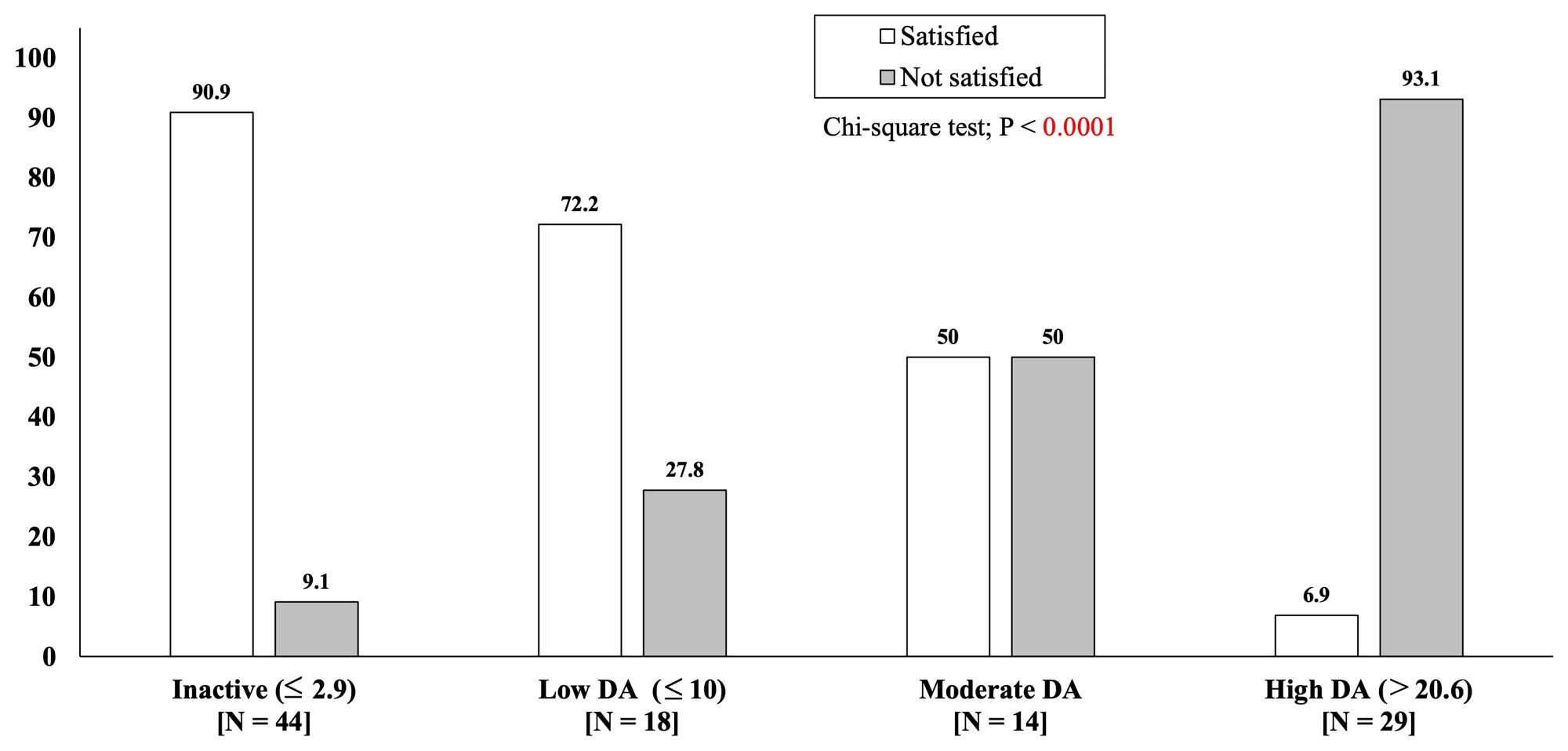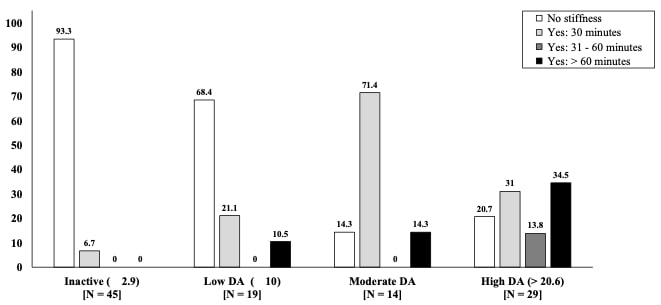Session Information
Session Type: Abstract Session
Session Time: 2:00PM-3:30PM
Background/Purpose: The systemic Juvenile Arthritis Disease Activity Score (sJADAS) is a composite disease activity (DA) score specifically validated for use in systemic JIA (sJIA), whose range is 0-50. The sJADAS10 is obtained as the simple sum of the scores of the following 5 items: 1) physician global assessment of overall DA, measured on a 10-cm visual analog scale (VAS), where 0 = no activity and 10 = maximum activity; 2) parent/patient global assessment of child’s well-being, measured on a 10-cm VAS, where 0 = very well and 10 = very poor; 3) count of joints with active disease in a maximum of 10 joints; 4) ESR or CRP level, normalized to a 0-10 scale; and 5) modified Systemic Manifestation Score (mSMS), ranging from 0 to 10, where 0 = absence of systemic manifestations and 10 = maximum activity of systemic manifestations. Our aim was to develop and validate the cutoffs in the sJADAS10 that define the states of inactive disease (ID), low (or minimal) DA (LDA), moderate DA (MDA) and high DA (HDA) in sJIA.
Methods: A multinational cross-sectional sample of 378 patients with definite or probable sJIA was enrolled. Each patient was categorized subjectively by the caring physician at study visit as being in the state of ID, LDA, MDA, or HDA. A total of 400 visits were collected, that were randomly divided into two samples: a developmental (n=240) and a validation sample (n=160). Optimal cutoff values were determined in the developmental sample against the subjective physician rating of DA state, that was used as external criterion, by multiple methods (calculation of percentiles of cumulative score distribution, ROC curve analysis, Youden index, 90% fixed specificity and kappa agreement). The choice of final cutoffs was based on clinical and statistical grounds. Cutoff validation was conducted in the validation sample by assessing discriminative ability.
Results: The selected sJADAS10 cutoffs were < = 2.9 for ID, < = 10 for LDA, 10-20.6 for MDA, and >20.6 for HDA. In validation analyses, the cutoffs showed strong ability to discriminate among DA states defined subjectively by the parents, parents’ satisfaction/dissatisfaction with illness outcome (Fig. 1), level of child’s pain (Fig. 2), presence/absence of functional impairment, presence/absence of morning stiffness (Fig. 3), and normal/reduced quality of life.
Conclusion: We developed the cutoffs in the sJADAS10 that define the main DA states in sJIA. The cutoffs revealed good metrologic properties in the validation sample, and are therefore suitable for application in clinical practice and research.
To cite this abstract in AMA style:
Rosina S, Rebollo Gimenez A, Tarantola L, Vyzhga Y, Carlini L, Patrone E, Katsikas M, Saad-Magalhaes C, El-Ghoneimy D, El Miedany Y, Khubchandani R, Pal P, Simonini G, Filocamo G, Gattinara M, De Benedetti F, Montin D, Civino A, Alsuweiti M, Stenevicha V, Chasnyk V, Alexeeva E, Al-Mayouf S, Vilayuk S, Pistorio A, Ravelli A. Defining Cutoffs for Disease Activity States in Systemic Juvenile Idiopathic Arthritis Based on the Systemic Juvenile Arthritis Disease Activity Score [abstract]. Arthritis Rheumatol. 2023; 75 (suppl 9). https://acrabstracts.org/abstract/defining-cutoffs-for-disease-activity-states-in-systemic-juvenile-idiopathic-arthritis-based-on-the-systemic-juvenile-arthritis-disease-activity-score/. Accessed .« Back to ACR Convergence 2023
ACR Meeting Abstracts - https://acrabstracts.org/abstract/defining-cutoffs-for-disease-activity-states-in-systemic-juvenile-idiopathic-arthritis-based-on-the-systemic-juvenile-arthritis-disease-activity-score/



